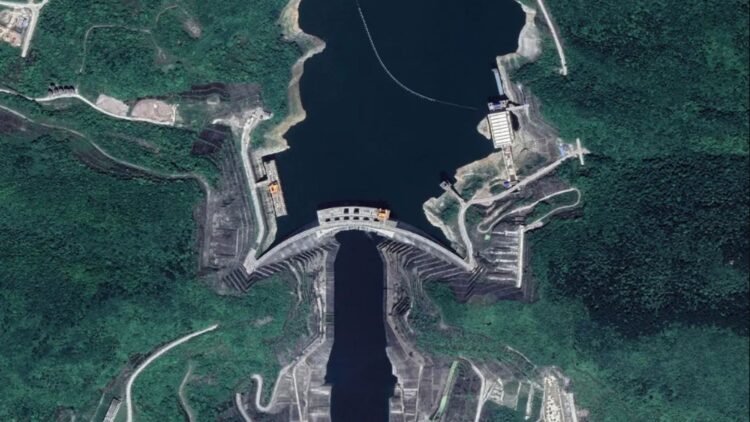Although China’s energy dreams have long been shown by the massive Three Gorges Dam, further upstream on the Jinsha River is another engineering marvel that is set to redefine hydropower: the Xiluodu Hydropower Station. China could be considering turning 12 trillion liters of water into energy.
Towering 285.5 meters above the riverbed and stretching across the boundary between Sichuan and Yunnan provinces, Xiluodu was just a dam that became a statement. The Xiluodu project stands for the fact that the energy generation in China is becoming smarter and far more sustainable, while drawing from the raw force of nature itself.
More about the Xiluodu Project
Known for its reservoir capacity of 12.67 billion cubic meters (roughly 12 trillion liters) and an annual power generation output of 57.12 billion kWh, the Xiluodu Hydropower Station is one of the largest hydropower victories ever attempted. The station was designed for electricity generation and for flood control, sediment retention, and even navigation improvements.
The numbers behind this Xiluodu project are almost mythic in scale. With 18 massive turbines, each boasting a capacity of 770,000 kW, Xiluodu’s total installed capacity sits at a staggering 13,860 MW, making it the second largest hydropower station in China and the third largest in the world.
Further specifications of the Xiluodu project
The Microhydropower has landed in America promising infinite energy just with water at home. While the Microhydropower is something to marvel at, the Xiluodu Hydropower Station is quite the talk of town being able to supply clean, renewable energy to millions of households, playing an essential role in China’s “West-to-East” power transmission strategy.
This strategy is further enhanced as it hinges on two high-voltage direct current (HVDC) transmission lines—one stretching 1,680 km to Zhejiang, and another reaching 1,286 km to Guangdong. Together, they are able to transfer approximately 14.4 GW of power to China’s economic heartlands. This results in national energy security and simultaneously helps to balance the energy disparity between resource-rich western regions and the high-demand coastal provinces.
Xiluodu Hydropower Station was constructed over six years ago round about 2007. The station’s centerpiece is a double-curved arch concrete dam—the third tallest in China. Behind it is a reservoir 200 km long and up to 700 meters wide, flooding over 3,000 hectares of land. This magnificent engineering comes at a hefty price of nearly $10 billion, however leads to economic and environmental returns.
A national backbone and not merely a dam
Xiluodu plays a greater role than that of energy production. Having a flood control capacity of 4.65 billion cubic meters, it ensures stronger flood resistance of major downstream cities like Yibin, Chongqing, and Luzhou. The flood protection standards in these cities were even upgraded from “once-in-20-years” to “once-in-100-years” resilience. Hence the Xiluodu project plays a critical component of the Yangtze River flood management system, especially as climate change increases.
The project further enhances technological innovation. Its five massive floodgates, including the world’s heaviest 1,600-ton gate which can discharge water at speeds nearing 50 m/s ensuring national stability.
Does the Xiluodu project have social and environmental costs?
The Xiluodu project is a victory for China, however, it does come with significant human and environmental costs. Approximately 180,000 people were displaced to make way for the reservoir, most of them from rural areas. Furthermore, filling of the reservoir in 2013 saw water level rising to 100 meters in just 51 days which caused ecological disruptions and led to drastically low water levels in downstream areas like Luzhou.
While the Xiluodu dam does not have the same global renown of the Three Gorges Dam, it’s every bit as significant. With its immense scale, multi-functional purpose, and strategic positioning, it’s helping power the world’s second-largest economy with clean, renewable energy about a trillion liters at a time. China could just be hiding the holy grail of energy with much renewable energy coming from hydropower.


